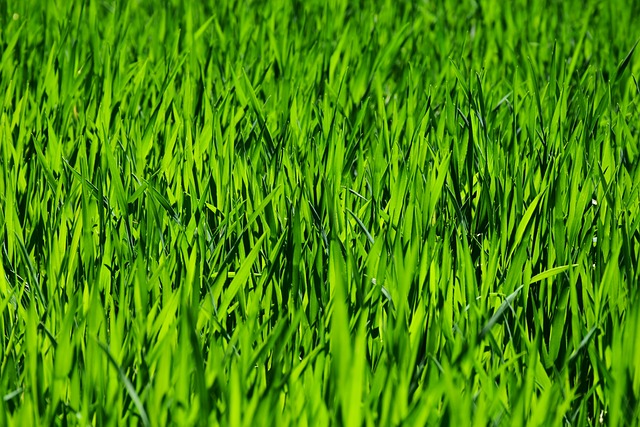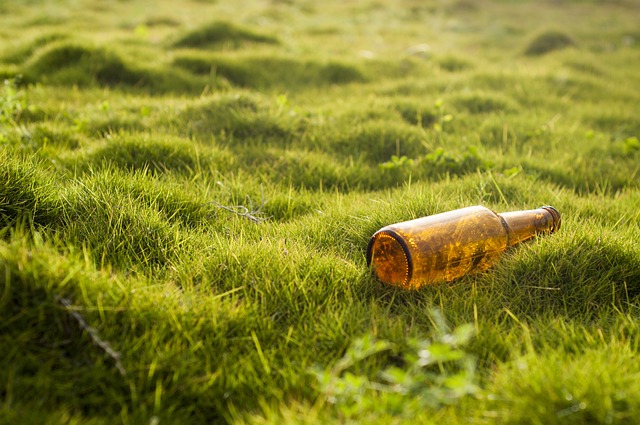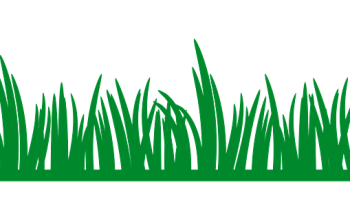Mulching and edging are essential practices in lawn care and landscaping that significantly enhance aesthetics and health of your lawn. Organic mulches (e.g., wood chips, straw) enrich soil with nutrients while inorganic options (e.g., stones, plastic) provide longer-lasting weed barriers. Edging techniques, using tools or natural borders, create clean lines, boosting curb appeal. The ideal timing for these tasks is spring or fall, offering milder temperatures and active grass growth. Regular mulching and edging not only improve visual appeal but also facilitate easier lawn care through soil protection, weed management, and moisture retention.
Transform your lawn into a picture-perfect space with mulching and edging—essential practices in lawn care and landscaping. This guide unveils the art of enhancing your outdoor oasis. We explore the numerous benefits of mulching, from suppressing weeds to regulating soil temperature, and delve into various types suitable for different grass varieties. Edging techniques are also demystified, ensuring clean lines and a polished look. Learn how to choose the ideal materials and timing for optimal results, along with expert tips for effective lawn grooming.
- Understanding Mulching: Benefits and Types for Lawns
- Edging Techniques: Enhancing Your Lawn's Look
- Choosing the Right Materials for Optimal Results
- When to Apply Mulch and Edge Your Lawn
- Tips for Effective Mulching and Edging Practices
Understanding Mulching: Benefits and Types for Lawns

Mulching is an essential practice in lawn care and landscaping, offering a multitude of benefits for your lawn’s health and overall aesthetics. By adding a layer of organic or inorganic material on top of the soil, mulching helps retain moisture, suppressing weeds’ growth, and regulating soil temperature. This natural process enhances the soil structure, allowing better water and nutrient absorption, which is crucial for a lush, vibrant lawn.
There are various types of mulch suitable for different lawn needs. Organic mulches, such as wood chips, straw, or compost, add nutrients to the soil over time and are ideal for promoting biological activity. Inorganic options, including stones, rubber, or plastic, provide a more long-lasting solution, preventing weed growth without adding organic matter. Choosing the right type of mulch depends on your lawn’s specific requirements, aesthetic preferences, and the level of maintenance you’re comfortable with.
Edging Techniques: Enhancing Your Lawn's Look

When it comes to lawn care and landscaping, edging is an often-overlooked yet powerful tool for enhancing your yard’s overall aesthetic appeal. This meticulous practice involves trimming the edges of your lawn to create crisp, clean lines between grass and other landscapes like flower beds, pavers, or walkways. A sharp pair of trimmers or edger tools can make quick work of this task, ensuring a polished look that elevates your property’s curb appeal.
For a truly stunning finish, consider incorporating different edging techniques. For instance, creating a border of stones or wooden planks along the lawn’s edge not only provides a clear delineation but also adds texture and visual interest. Alternatively, using low-growing plants or shrubs to define the boundaries can create a natural, organic look that complements your lawn’s greenery while reducing maintenance requirements in landscaping.
Choosing the Right Materials for Optimal Results

When it comes to lawn care and landscaping, choosing the right materials for mulching and edging is key to achieving optimal results. Start by selecting high-quality mulch, such as organic options like wood chips or straw, which not only enhance soil health but also provide a natural aesthetic appeal. These materials help retain moisture in the soil, suppress weeds, and gradually release nutrients, contributing to a lush, vibrant lawn.
For edging, consider durable and long-lasting materials like plastic, stone, or metal. Properly chosen edgers can define your lawn’s edges neatly, creating a clean and polished look that elevates your landscaping efforts. In terms of lawn care, regular mulching and edging not only improve the overall appearance but also facilitate easier maintenance by preventing grass from encroaching onto walkways and driveways, reducing the need for frequent trimming and weeding.
When to Apply Mulch and Edge Your Lawn

The timing of applying mulch and edging to your lawn is crucial for achieving a lush, well-maintained look. In general, it’s best to consider doing this during the spring or fall when temperatures are moderate and growth is active but not excessive. Spring is an ideal time to prepare your lawn for the growing season by adding fresh layers of mulch to protect the soil, suppress weeds, and retain moisture. Fall, on the other hand, is perfect for edging as it helps define your lawn’s edges, preventing grass from encroaching onto sidewalks or driveways. Regular mulching and edging not only improves the aesthetic appeal of your landscaping but also contributes to healthier lawn care practices.
Tips for Effective Mulching and Edging Practices

Effective mulch and edging practices are essential components of lawn care and landscaping. To ensure optimal results, start by selecting the right type of mulch for your lawn. Organic mulches, such as wood chips or straw, not only enhance soil health by adding nutrients but also suppress weeds naturally. In contrast, inorganic mulches like rock or gravel offer a more low-maintenance option, preventing weed growth and retaining moisture effectively.
When edging, consider using high-quality tools to achieve clean lines. Regularly trimming edges keeps your lawn looking neat and polished. Incorporate these practices into your routine lawn care regimen for a lush, well-maintained landscape that increases your home’s curb appeal.
Mulching and edging are essential practices in lawn care and landscaping, offering both aesthetic and functional benefits. By understanding the different types of mulch, effective edging techniques, and optimal timing, you can transform your lawn into a vibrant, well-maintained space. These simple yet powerful tools not only enhance curb appeal but also contribute to a healthier, more sustainable landscape. Incorporate these practices into your routine for a lush, pristine lawn that becomes the envy of your neighborhood.



